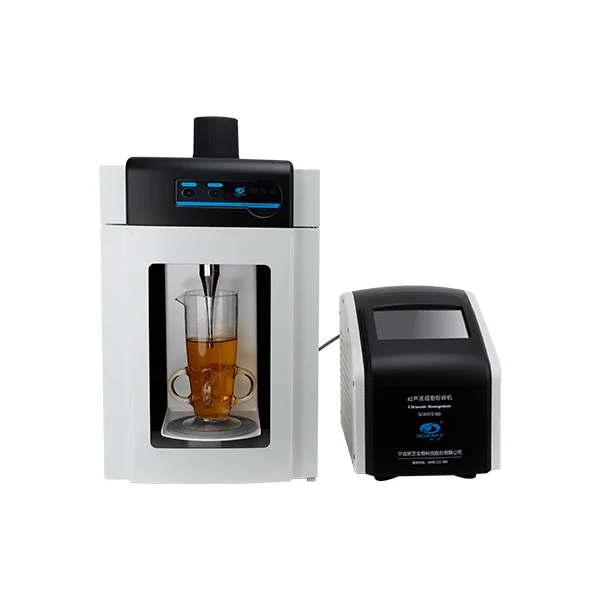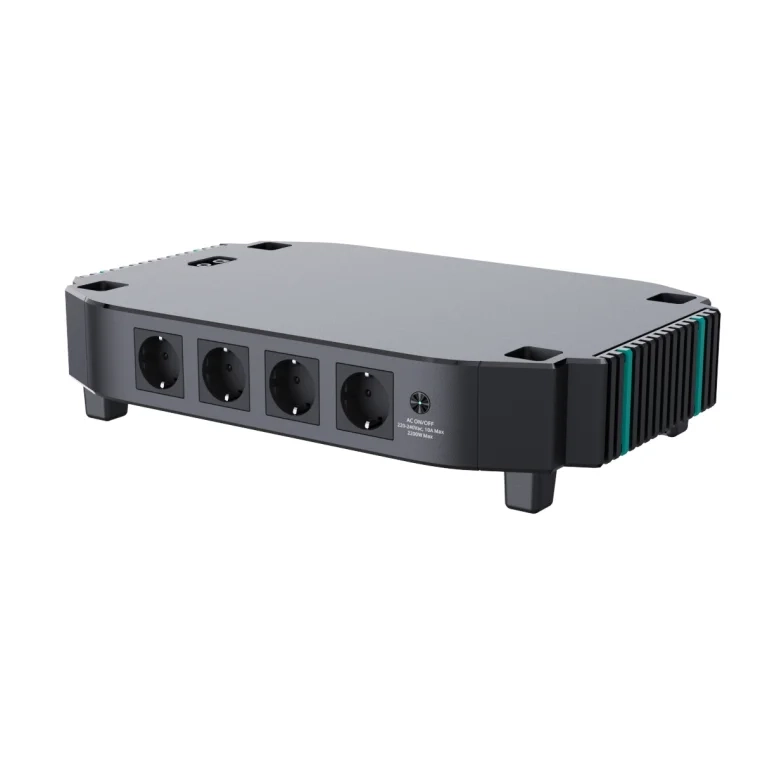An ultrasonic generator is a high-precision, multi-functional experimental device widely used in life sciences, materials science, chemical reaction acceleration, and environmental protection. It utilizes the ultrasonic cavitation effect to achieve functions such as cell disruption, tissue grinding, emulsification and dispersion, and sample extraction. However, ultrasonic generators involve high-frequency vibration, high energy transfer, and the potential risk of liquid splashing during use, making safe operation paramount. This article systematically outlines the safety precautions for operating ultrasonic generators, providing a complete safety guide for researchers and laboratory staff, covering equipment operation, environmental setup, personal protective equipment, and daily maintenance.
1. Understanding the Working Principle of an Ultrasonic Generator
Before discussing safety precautions, understanding the working principle of an ultrasonic generator is crucial. This instrument converts electrical energy into high-frequency mechanical vibration, generating ultrasonic cavitation. When ultrasound propagates in a liquid, it forms tiny bubbles that rapidly collapse, producing intense localized pressure and temperature increases. This effect can disrupt cells, emulsify liquids, disperse particles, or accelerate chemical reactions, but it also introduces potential safety risks, such as:
High-frequency vibration may cause damage to human tissue
Liquid splashing poses a risk of chemical contact
Overheating or operation without load may damage the instrument
Understanding these risks helps in the scientific development of safe operating procedures.
2. Safety Preparations Before Operation
Familiarize Yourself with the Instruction Manual Before use, carefully read the instrument's instruction manual to understand the operating interface, power adjustment, time control, pulse mode, and emergency stop function. Different models of ultrasonic generators may vary; ensure operation according to the manufacturer's specifications.
Select a Suitable Sample Container Experimental samples should be placed in containers resistant to high-frequency vibration, such as glass or specific plastic containers. Avoid using fragile or thin containers to prevent breakage due to ultrasonic vibration.
Determine the Working Environment The instrument should be placed on a stable laboratory table, away from flammable and explosive materials. The working area should be dry, well-ventilated, and equipped with emergency eyewash stations and chemical spill handling tools.
Check Instrument Status Before starting, check the power cord, probe mounting hardware, and equipment casing for damage, ensuring there are no loose connections, breaks, or leaks.

3. Safety Precautions During Ultrasonic Generator Operation
Avoid Dry Operation Operating the probe without immersion in liquid will result in no-load vibration, potentially damaging the probe or transducer. Always ensure the probe is completely immersed in the sample liquid before starting.
Controlling Power and Time
Different samples have varying tolerances to ultrasonic intensity and processing time. Excessive power or processing time can damage the sample and cause probe overheating, increasing the risk of accidents. It is recommended to select an appropriate power based on the sample type and use an intermittent operation mode.
Preventing Liquid Splash
High-intensity ultrasound may cause liquid sample to splash. Use covered containers or splash guards during operation, and avoid filling containers completely; maintain a moderate liquid level.
Secure Probe Securely
The probe generates high-speed vibrations during operation and must be securely fixed to prevent slippage or displacement from the container, which could lead to liquid splashing or instrument damage.
Avoid Prolonged Continuous Use
Continuous operation of the ultrasonic generator can cause the probe to overheat, reducing efficiency and even damaging the equipment. When using for extended periods, use an intermittent mode to allow the equipment and sample to cool down.
4. Personal Protective Measures
Wear Protective Eyewear and Gloves
Liquid splashes may pose a chemical exposure risk. Wear protective eyewear, laboratory gloves, and a lab coat during operation to avoid direct skin and eye contact with the sample.
Ear Protection
Although most ultrasonic frequencies are outside the range of human hearing, the equipment may still generate mechanical noise during operation. For prolonged operation, it is recommended to wear earmuffs or use the equipment in a soundproof environment.
Hand Positioning
Avoid direct contact with vibrating parts when operating the probe to prevent finger injuries.
Preventing Splash Injuries
When handling high-concentration chemical solutions or biological samples, the operating area should be equipped with splash guards or use splash shields to reduce the risk of accidents.
5. Environmental and Equipment Safety
Laboratory Environment
Ensure there are no flammable or explosive materials around the ultrasonic generator. The floor should be dry, non-slip, and have sufficient space for operation and evacuation.
Electrical Safety
Before use, ensure the equipment is properly grounded and the power supply voltage meets the equipment requirements. Do not use damaged power cords or interfaces.
Equipment Heat Dissipation
The ultrasonic generator generates heat during operation. Ensure good ventilation to prevent overheating, which could affect performance and lifespan.
6. Daily Maintenance and Safe Operation
Cleaning and Inspection
After each use, clean the probe and equipment surface promptly to prevent residue from corroding the equipment. Regularly inspect probe wear, fixing screws, and power interfaces.
Storage Guidelines: When the equipment is not in use for extended periods, remove the probe, clean it, and store it in a dry, stable environment, avoiding moisture and mechanical impact.
Operator Training: Ensure laboratory staff are familiar with the ultrasonic generator's operating procedures, emergency shutdown procedures, and daily maintenance processes to minimize safety hazards caused by misoperation.
7. Emergency Handling Measures
Liquid Spillage: Immediately stop the equipment, clean up any spilled liquid, and replace contaminated protective equipment. If the liquid is a hazardous chemical, follow the chemical safety handling procedures.
Abnormal Overheating or Noise: Turn off the equipment power and check the probe and circuitry after it cools down. Contact after-sales service or professional maintenance personnel if necessary.
Electrical Faults: If smoke, tripping, or abnormal interface is detected, immediately disconnect the power and have it checked and handled by professionals. Do not attempt to disassemble the equipment yourself.
8. Conclusion
As a highly efficient and versatile experimental device, the ultrasonic generator plays an irreplaceable role in scientific research and industrial applications. However, its high-frequency vibration and energy density also bring potential safety risks. By mastering correct operating procedures, wearing necessary protective equipment, maintaining equipment and environmental safety, and performing routine maintenance, researchers can effectively reduce the probability of accidents, ensure smooth experiments, and extend the lifespan of instruments. Safe operation not only protects researchers but also guarantees the reliability of experimental results, making it a crucial aspect that every researcher must prioritize.
Scientz, as a professional distributor of ultrasonic generators, is committed to providing high-quality, multifunctional ultrasonic instruments to research laboratories and industrial users. The company distributes and supplies products covering various power levels, frequencies, and probe specifications to meet diverse application needs such as cell disruption, tissue grinding, emulsification and dispersion, nanomaterial preparation, and chemical reaction acceleration. Leveraging extensive industry experience and comprehensive pre-sales and after-sales service, Scientz not only provides equipment selection and operation guidance but also offers maintenance advice to ensure the long-term stable operation of ultrasonic generators, improving experimental efficiency and reliability.
www.dscientz.com
dscientz





